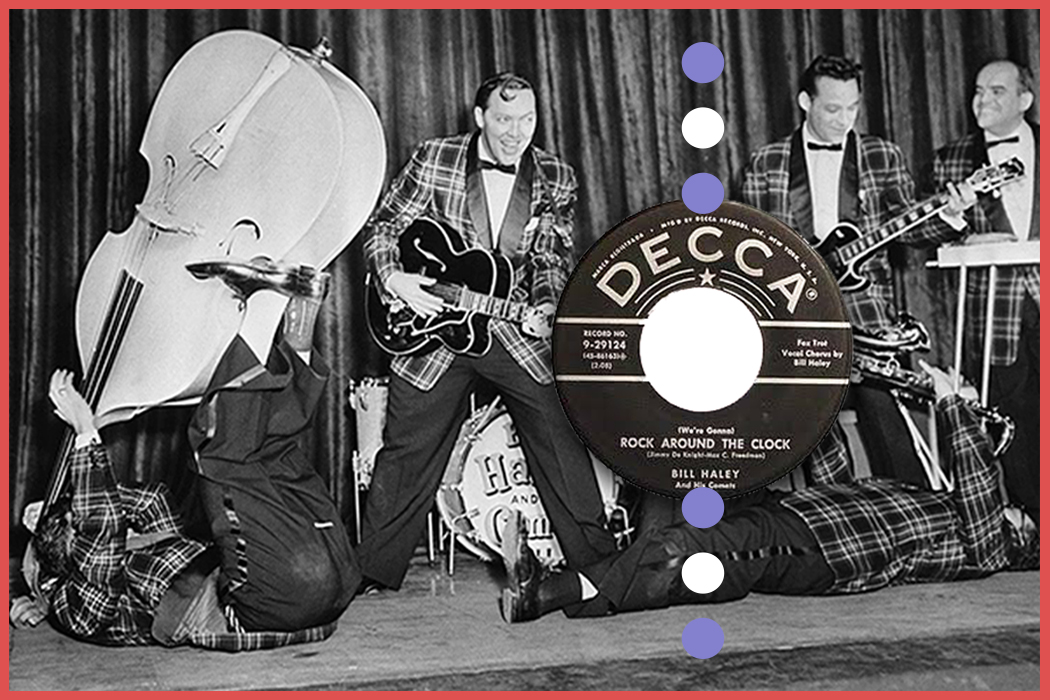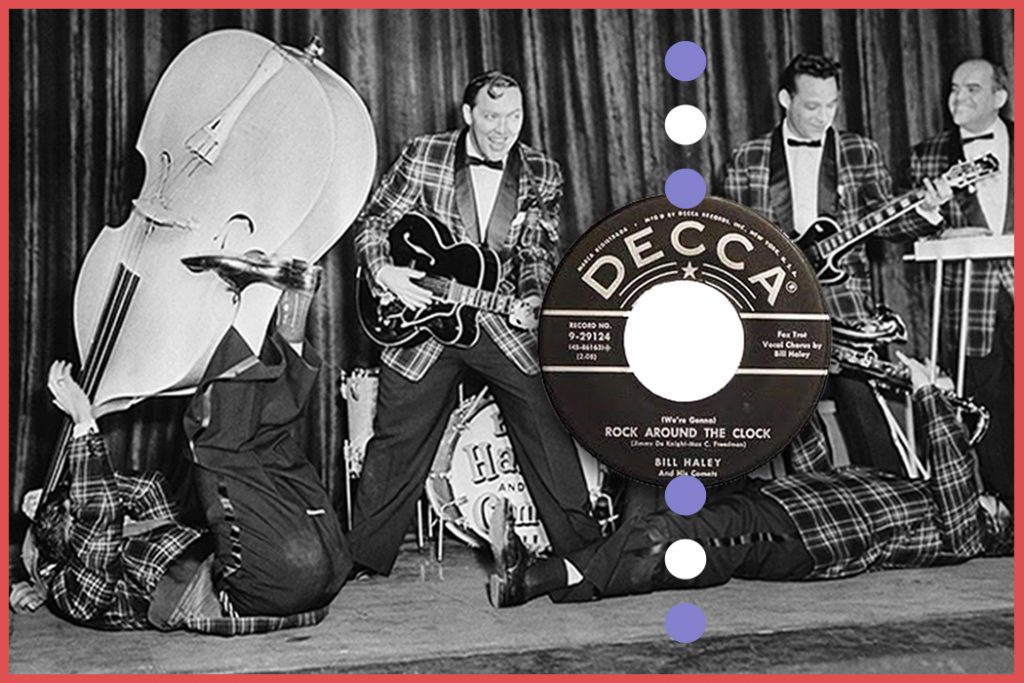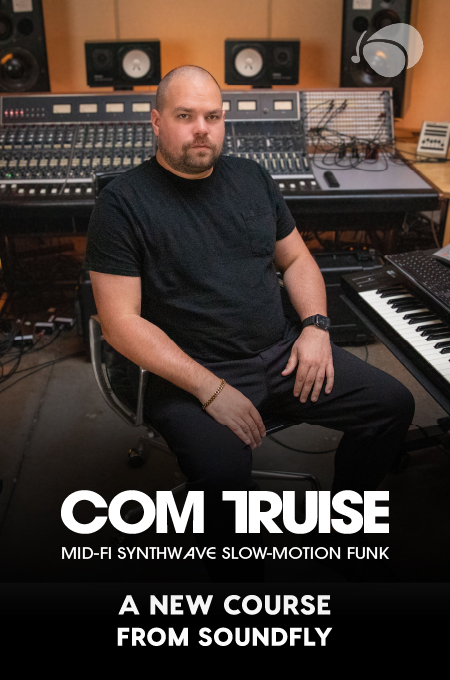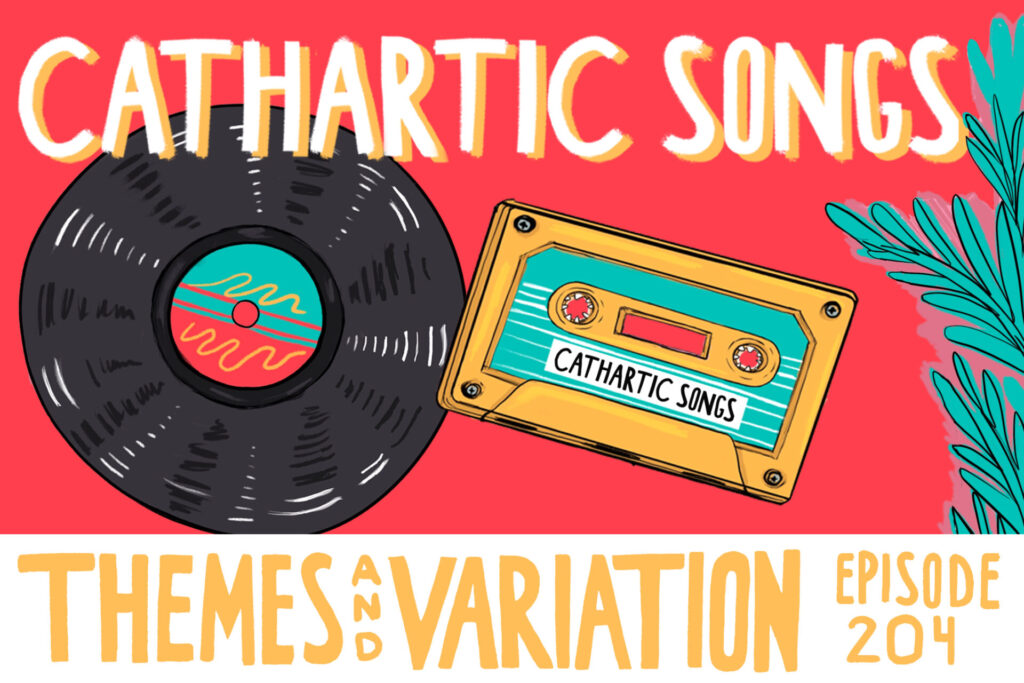
+ Our brand new course with The Dillinger Escape Plan’s Ben Weinman teaches how to make a living in music without making sacrifices. Check out The Business of Uncompromising Art, out now exclusively on Soundfly.
For someone my age, who grew up in the latter half of the 20th century — listening to the Rolling Stones, the Beatles, Nirvana, Led Zeppelin, heck, even the Killers — it’s hard to imagine life without rock ‘n’ roll. Even if that style of music isn’t your personal listening preference, can you even picture what culture would be like with rock music?
Well, that was the case in the early 1950s, before rock music had begun its meteoric rise of influence over the music and art cultures of the universe. In fact, in the 1950s, there was nothing else like rock ‘n’ roll at the time — it shattered racial and economic barriers, excited and engaged youth populations, and gave birth to a fresh new kind of music and attitude that inspired nearly everything we listen to today.
All this was spawned, at least in part, by “(We’re Gonna) Rock Around the Clock” — rock music’s first number-one hit.
It’s perhaps necessary to point out here that “Rock Around the Clock” was by no means the first-ever rock song. There is some debate among rock historians, however, over which song was actually the ground zero of rock ‘n’ roll. Depending on how you’d define the essential foundational qualities of the genre, that honor could go to several songs, such as Arthur “Big Boy” Crudup’s 1946 song, “That’s All Right, Mama” (which Elvis Presley would go on to cover later), or perhaps “Rocket 88” by Jackie Brenston and His Delta Cats, recorded in 1951. But that’s a topic for another discussion.
Bill Haley and his band the Comets first cut their tune, “Rock Around the Clock,” at the end of a three-hour recording session for a completely different song in 1954. “Thirteen Women (And I’m the Only Man in Town),” was chosen to be the A-side of their record by the label, Decca. It was an odd choice for a single, considering the song was about a nuclear bomb going off and leaving only 14 people alive.
And so “Rock Around the Clock” (which was recorded hastily in only the last 40 minutes of the session) ended up on the B-side. Despite that Haley and his band had been playing it for months to enthusiastic crowds at their live shows, the label didn’t appear to feel it was strong enough to release as a single. Regardless, the band got the song down in two takes (the first take was unusable) — an impressive feat when you consider the relatively rudimentary recording technology available at the time. All of the musicians were live on a single track.
The A-side of the record didn’t exactly create a furor. Although the single did sell a modest 75,000 copies, it was on its way to being forgotten and sliding into obscurity, if not for a very fortunate occurrence. In fact, rock history may have been changed forever if it wasn’t for one 10-year-old kid who fell in love with the B-side of the record, and happened to be the son of actor Glenn Ford. At the time, Ford was slated to star in a movie about teenage delinquents called Blackboard Jungle. After a bit of conversation about which song would play during the opening credits and diegetically in the opening sequence, Ford brought some records that his son was enjoying to the studio, and eventually, it was decided that “Rock Around the Clock” would be the song.
The song became an instant smash hit — millions of copies were sold, and it set sales records that still stand to this day. It spent a total of eight weeks at number one on the Billboard charts, and nearly half a year overall. It even spawned its own movie.
Everything about this song is iconic — from Bill Haley’s voice, to the guitar solo, to the raw energy of the recording, pleading its listeners to drop everything and dance, wherever you are. Perhaps most importantly, it blew the barn doors open for the stampede of rock ‘n’ roll music that would rush in after it.
It was the first rock record to show that the music of youth audiences could go to the top of the charts. It certainly wasn’t the last.
Despite Haley having a string of other successful hits, like “Shake, Rattle, and Roll,” “See You Later, Alligator,” and “Rip It Up,” to name a few, his reign as the king of pop would eventually be eclipsed by the talented heartthrob Elvis Presley. As a result, Haley’s lasting influence is often minimized, but as a pioneer, he is certainly celebrated. If not for that first smash hit, none of the acts and music that followed may have come to pass.
Rev Up Your Creative Engines…
Continue your learning with hundreds of lessons on songwriting, mixing, recording and production, composing, beat making, and more on Soundfly, with artist-led courses by Kimbra, RJD2, Com Truise, Kiefer, Ryan Lott, and Ben Weinman’s The Business of Uncompromising Art.




